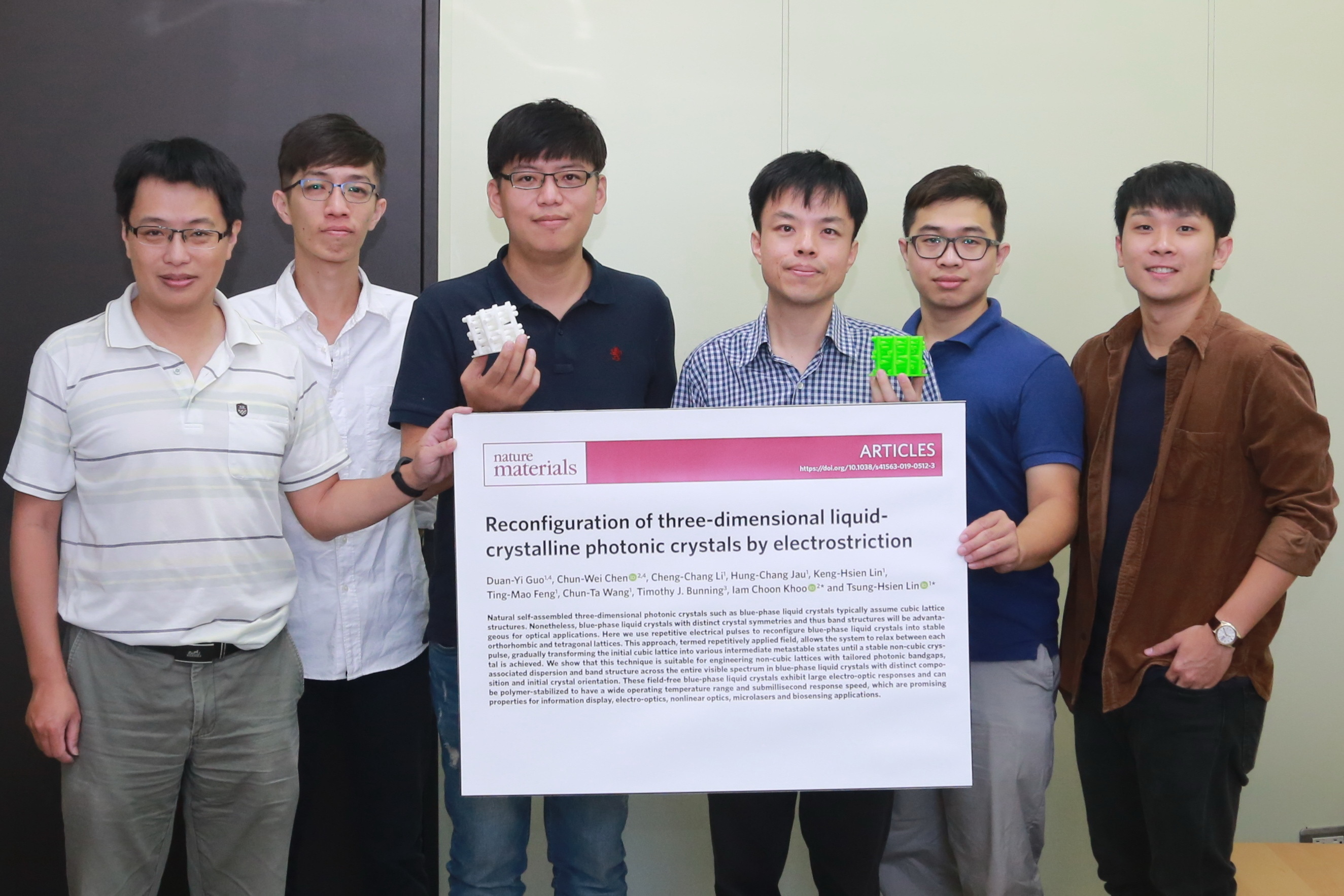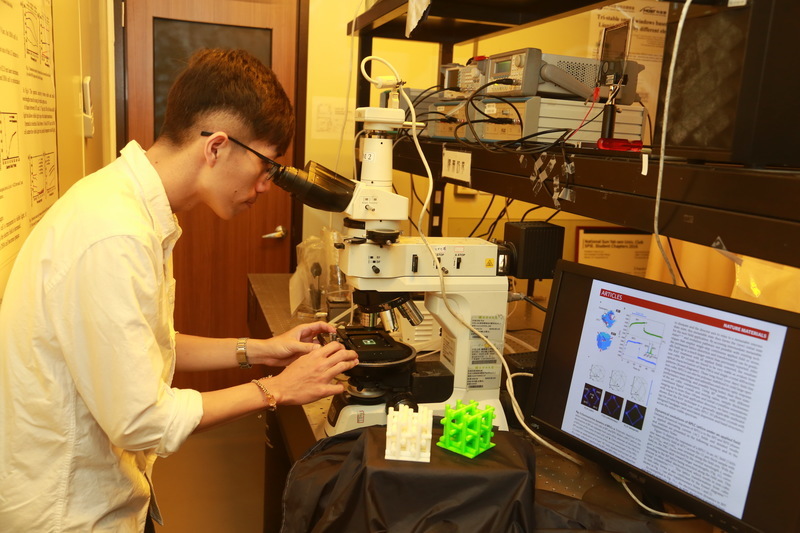2019/11 Liquid Crystalline Chiral Photonic Crystals for Advanced Photonic Applications
Liquid Crystalline Chiral Photonic Crystals for Advanced Photonic Applications

Professor Tsuen-Hsien Lin from the Department of Photonics at National Sun Yat-Sen University, Taiwan led an international research team, collaborating with professors and scientists at Pennsylvania State University and Wright Patterson Air Force Research Laboratory, USA, has successfully developed the pioneer Repetitively-Applied Field (RAF) technology in the world to stably transform the 3-D cubic blue-phase liquid crystals (BPLC) photonics crystal into non-cubic structure. Their research finding was reported in the world-class distinguished journal,Nature Materials, in October 2019.
Liquid crystal (LC) devices now are everywhere in our daily lives, from the large industrial displays to individual home’s appliances, office’s equipment, automobiles, ubiquitous personal smart phones, and computers. Why LC devices are so widely popular is because the unique physical and optical properties that enable its operations very efficient with low power threshold at low cost. Among emergent liquid-crystalline materials under the development for improved performance, those that also possess;photonic-crystal properties present intriguing fundamental challenges as well as tremendous application potentials were not found in or possible with conventional crystals.
Professor Lin’s research team has been focusing on the fabrication, characterizations and device-feasibility demonstrations of two types of liquid crystalline photonic crystal: cholesteric liquid crystals (CLC) that function as 1-D PC and BPLC that function as 3-D PCs. Both CLC and BPLC are formed by introducing chiral agents into conventional (so-called nematic) liquid crystals used in ubiquitous display screen. Depending on the amount of the chiral agent, the constituent molecules self-assemble into 1-D or 3-D photonic crystals. In a photonic crystal, the dielectric constant is tailor-made to vary periodically in selected dimensions, giving rise to the so-called "photonic band gap” and band-edge dispersion which guides/confines/limits electromagnetic propagation. Photonic crystals in a pristine state, and their variants that contain specifically designed defects structures or photosensitive or electro-optical constituents enable selective reflections, micro integrated photonic circuitries, mirrorless lasers, production of slow/fast lights and other advanced photonic processes/devices.

Prof. Lin's Ph.D. student in the research laboratory

